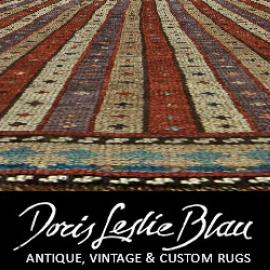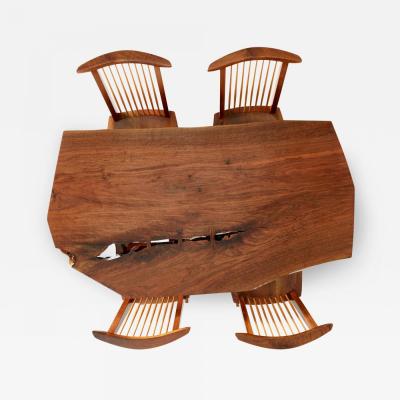Made in Massachusetts
Studio Furniture of the Bay State
Since the mid-1950s, Massachusetts has seen a growth in the production of studio furniture. Many influential makers who trained and worked in the Bay State, like Tom Loeser, Alphonse Mattia, and Rich Tannen (Fig. 1), have carried forward the tradition by teaching furniture design in schools around the country. Today, studio furniture in Massachusetts spans the stylistic poles—from interpretations of historical prototypes to nonfunctional, sculptural, and conceptual works—earning its makers national and international acclaim.
Made in Massachusetts: Studio Furniture of the Bay State, at Fuller Craft Museum, in Brockton, Massachusetts, presents thirty-nine artists’ works built in Massachusetts that express the diversity and quality of contemporary studio furniture in the state. Represented works range from examples inspired by makers of the Federal period like Samuel McIntire of Salem to non-functional, sculptural, and conceptual works. Collectively, they document the range of materials, forms, and styles that give furniture its special nature (Fig. 2).
Contributing to the strength of the studio furniture movement in Massachusetts has been the number of educational environments that have done much to encourage artists. The current cabinet and furniture making program at North Bennet Street School in Boston, incorporated in 1885 to provide vocational training to immigrants, has been shaped by influential teachers, many of whom are represented in the exhibition. These include Alex Krutzky, Philip Lowe, Will Neptune, Richard Oedel, Lance Patterson, and current director Miguel Gómez-Ibáñez. For his Escritorio (Fig. 3), Gómez-Ibáñez dipped into his heritage to reinterpret a seventeenth-century Spanish high-style writing desk with formal garden motifs on the doors and a modern painted botanical alphabet ornamenting the drawers within. Nineteen years ago Philip Lowe, embarked on his own and opened The Furniture Institute of Massachusetts in Beverly, where students are taught both the art of classical woodworking techniques and functional contemporary furniture design and construction (Fig. 4).
The seminal force for contemporary design has been the Program in Artisanry that operated at Boston University from 1975 to 1985, where Jere Osgood, founding director, and Alphonse Mattia, served as instructors. The program was reestablished at the Swain School of Design in New Bedford, which, in 1988, merged with the University of Massachusetts, Dartmouth. Until his retirement in 2010, Stephen Whittlesey, an elder statesman of furniture design and philosophy, trained students to discover and reveal meaning in cast-off materials. As with North Bennett Street School, students learn furniture making as well other craft disciplines.
In the early 1980s, when the studio furniture movement was gaining momentum, museums in Massachusetts acknowledged the swelling pool of talent with exhibitions. In 1984, Fuller Craft Museum (then known as Fuller Museum of Art), with funds provided by the Massachusetts Council of Arts and Humanities New Works Grant, commissioned significant works by several important furniture artists, among them Judy McKie (Fig. 5), Rosanne Somerson, Kristina Madsen, and Rich Tannen (see fig. 1). Five years later the Museum of Fine Arts, Boston, presented its landmark exhibition New American Furniture. The MFA in 2003 revisited the subject with The Maker’s Hand, where some of the artists in the current Fuller Craft show were again represented.
Peter Dean is one of four furniture artists in the exhibition whose architectural training has influenced their work. Dean’s Tempietto Table (Fig. 6) was inspired by the architectural perfection of Donato Bramante’s 1504 Tempietto, a touchstone of the Italian High Renaissance in Rome. Silas Kopf (Fig. 7), after undergraduate studies in architecture, apprenticed to Wendell Castle in the early 1980s, then learned techniques of marquetry at École Boulle in Paris and traveled widely to explore touchstones of this art form.
The nautical world has influenced other furniture makers in the exhibition. John Cameron began as a boatbuilder’s apprentice (see fig. 4). Mitch Ryerson studied boatbuilding before becoming involved in designing and building furniture (Fig. 8). Tom Loeser has built boat-like furniture forms as well as functioning boats. John Everdell spent his formative years aboard a boat, which helped shape his minimalist mindset of replacing pure decoration with forms that express function. Furniture such as his Hall Table (Fig. 9), show the influence of brothers Charles Sumner Greene (1868–1957) and Henry Mather Greene (1870–1954), founders of the noted architectural firm of Greene and Greene in Pasadena.
Many studio furniture artists use non-traditional materials. Bart Niswonger’s Ball Side Table (Fig. 10) is comprised of cast clear urethane elements in roughly textured wood molds. Jay Stanger employs steel and aluminum with polychrome wood veneers and NASA-inspired ergonomics in such works as Arched and Animated (see fig. 2) to evoke the chaos of modern life melded with dynamic energy of abstract expressionist painting.
Massachusetts studio furniture artists continue to present visually stunning and creative works that add an important component to the state’s history of furniture production. Made in Massachusetts: Studio Furniture of the Bay State is one of eleven institutions comprising Four Centuries of Massachusetts Furniture (www.fourcenturies.org) that extends through 2014. Made in Massachusetts was on view at Fuller Craft Museum, Brockton, Mass., from October 12, 2013 through February 9, 2014. For current programs at Fuller Craft call 508.588.6000 or visit www.fullercraft.org.
This article was originally published in the Summer 2015 issue of Antiques & Fine Art magazine, a digitized version of which is available on afamag.com. Antiques & Fine Art, AFAmag, AFAnews, and AFA Publishing are affiliated with InCollect.com.










































